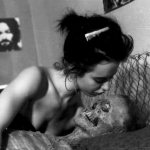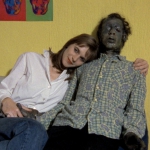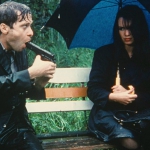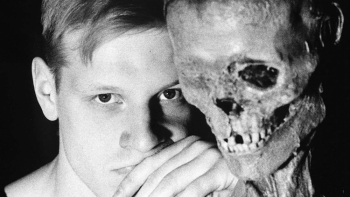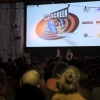IN PERSON TRIBUTE JÖRG BUTTGEREIT | Offscreen
German filmmaker Jörg Buttgereit has built a career as a provocateur, playwright and theatre director, and director of some of the most notorious and controversial films ever made. Starting from a punk ethic and steadily developing a startling visionary visual aesthetic and cinematographic technique, his films are suffused with a perverse fascination with death. At the same time, he always pays heed to the fragility of life, and to a twisted but sincere form of romance. This artistic approach can sometime alienate regular horror fans, despite the abundance of gore and minutely detailed imagery of mutilation, death and decay, but Buttgereit's sardonic film quartet ("Nekromantik" 1 and 2, "Der Todesking" and "Schramm") seals his status as one of cinema's most original, innovative and "dangerous" filmmakers. Over the years, these films have lost none of their power to shock, and may not be suitable for viewers of a sensitive disposition.
NEKROMANTIK
Buttgereit's taboo-busting feature-length debut, shot on Super8, was hailed by John Waters as "the first ever erotic film for necrophiliacs." Rob and his girlfriend Betty form a ménage-à-trois with a rotting corpse, but when Rob gets fired from his job, Betty leaves him – and takes the corpse with her.
NEKROMANTIK 2
Following on from the end of the first film, Rob's corpse is dug up and taken home by Monika, who has sex with it before sawing it up and keeping only the head and genitals. But her attempts to forge a "normal" relationship go horribly wrong after her new boyfriend finds Rob's meat and two veg in her fridge.
SCHRAMM: INTO THE MIND OF A SERIAL KILLER
A lonely serial killer falls off a ladder and lies dying in a pool of his own blood while his miserable life flashes before his eyes. Reality and delusion intermingle in his memories of rape and murder, an obsession with the prostitute next door, vaginas with teeth, and hammering nails into his own penis.
THE DEATH KING
A rotting human corpse supplies the framing device for seven different segments, one for each day of the week, exploring the themes of murder and suicide played out in variously shocking, exploitative, poignant or surreal ways. Hermann Kopp's fantastic electro-industrial score provides the finishing touch.

